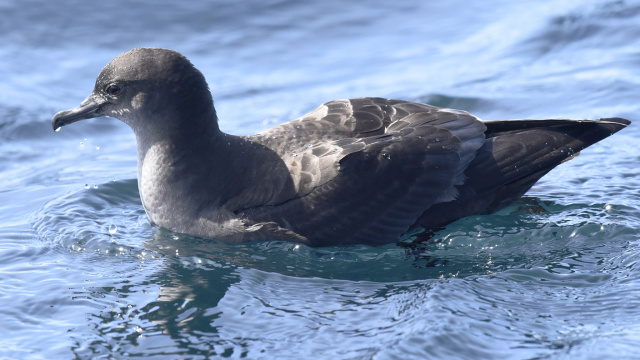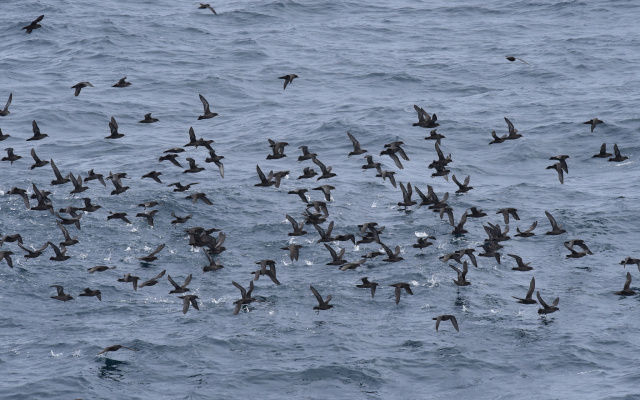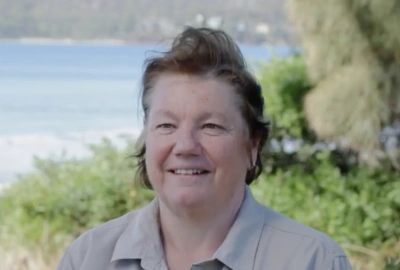The short-tailed shearwater
Some of them do get slightly off track and can end up up the Derwent River on the Tasman Bridge, as we find every year. But mostly they get all the way back to Alaska to go and feed up, and then they come back the following year.
They are mutton birds and they are also harvested for food here. There are other species that are called mutton birds in different parts of the world, but in Tasmania, short-tailed shearwaters are mutton birds.

They pair up with their partner, they dig a burrow, and then they lay their eggs and rear their young. They fly out every morning just before dawn usually, out to sea to feed for the day. They fly back in at dusk and they leave their youngsters in their burrows all through the day.
We've been starting to see more tropical species coming in like wedge-tailed shearwaters in summer. There's a lot of research going on in various institutions about what happens to seabirds with climate change, warming waters, reductions in food availability.
For short-tailed shearwaters in particular avian flu in the northern hemisphere is something we're watching out for here.


Karen Dick
Some of them do get slightly off track and can end up up the Derwent River on the Tasman Bridge, as we find every year. But mostly they get all the way back to Alaska to go and feed up, and then they come back the following year.
They are mutton birds and they are also harvested for food here. There are other species that are called mutton birds in different parts of the world, but in Tasmania, short-tailed shearwaters are mutton birds.

They pair up with their partner, they dig a burrow, and then they lay their eggs and rear their young. They fly out every morning just before dawn usually, out to sea to feed for the day. They fly back in at dusk and they leave their youngsters in their burrows all through the day.
We've been starting to see more tropical species coming in like wedge-tailed shearwaters in summer. There's a lot of research going on in various institutions about what happens to seabirds with climate change, warming waters, reductions in food availability.
For short-tailed shearwaters in particular avian flu in the northern hemisphere is something we're watching out for here.

You might like...

A tiny transhemispheric migrant

Storm petrel power

The amazing migration

Albatross: a life at sea
Newsletter
Sign up to keep in touch with articles, updates, events or news from Kuno, your platform for nature
